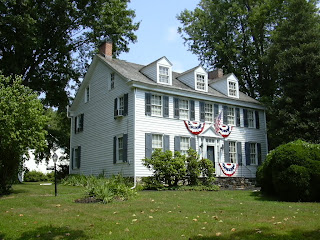The Meeteer House

The Meeteer House For the first few posts here, we've stayed on the eastern side of MCH, but the hundred actually stretches all the way west to White Clay Creek on the eastern edge of Newark. So as not to slight the western portion of MCH, we'll now take a drive down Kirkwood Highway. While traveling west on Kirkwood Hwy, just before Possum Park Road, there sits on the right a shining white, 2 1/2 story Federal-style home. While the house currently serves as the Yasik Funeral Home, its history goes back much, much further. And while you wouldn't think to connect them now, this classy 5-bay, wood-frame house has direct ties to an significant, and recently lost, piece of Newark-area history. In the 1780's, a Quaker from Chester County named Thomas Meeteer moved to Delaware and established a paper mill along the banks of White Clay Creek. Known as the Milford Paper Mill, it was one of the largest operations in MCH, employing over 50 workers by 1820. When Thomas died in 181


.jpg)



